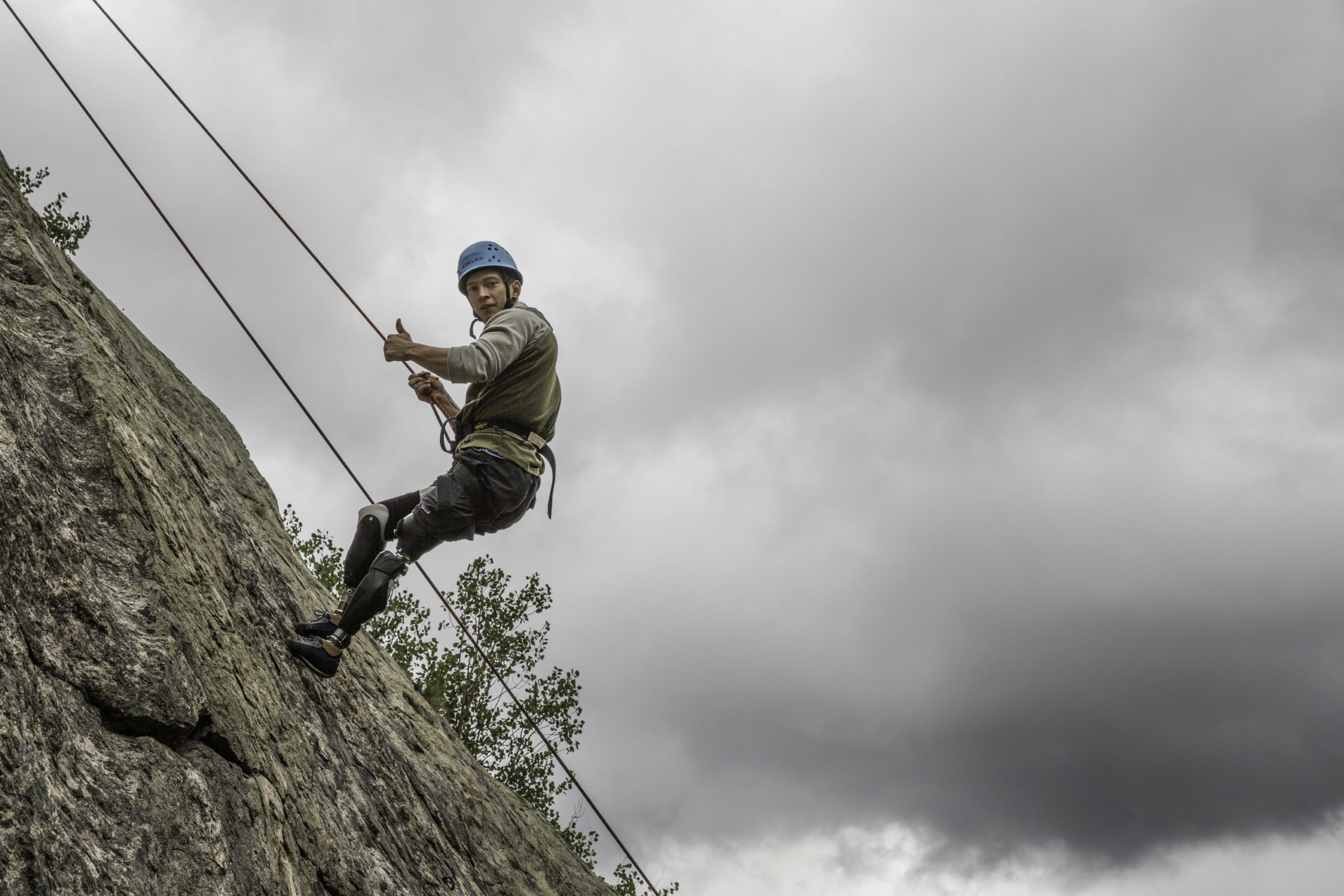
Rock Climbing/Adaptive Rock Climbing
About
For a full body workout, adrenaline rush and fun, few sports beat climbing. With the growth of indoor climbing gyms across the country and the increase in adaptive programs, climbing is now more accessible than ever. More than the physical benefits, climbing is a mental sport that requires you to think through your next moves and see your route two or three steps in advance.
While it can seem intimidating for those who don’t see themselves as adventure seekers, climbing is actually very safe and approachable if you’ve got the right equipment and instruction.
Learning the Lingo
Climbing has its own vocabulary, and it’s helpful to understand some of the terms before you head out.
Holds: Places on the wall or within the rock where a climber places their hands and feet.
Harness: A security belt that all climbers wear, which loops around both legs and their waist. The harness is connected to the climbing rope via a carabiner.
Belay: A metal device that the climber’s rope is threaded through which is used to secure the climber and help ensure a controlled climb and descent. The person controlling the belay is referred to as the belayer.
Top-Roping: A type of climbing where the climbing rope runs through a carabiner attached to a bolt in the ceiling of the gym, or top of the rock climbing wall. Most indoor climbing is done by top-roping.
Lead Climbing: A type of climbing where the climber is tied into one end of the rope and clips into anchoring devices as they move upwards.
Bouldering: Close to the ground climbing, without a rope, where the climber only goes as high as they could jump off without risking injury.
Rapelling: A controlled slide down to the ground.
Equipment
If you’re new to the sport, it’s best to head to your local adaptive program or climbing gym. They will have trained instructors to teach you all of the basics, and can provide you with rental gear to get you started. You’ll need a harness, rope, carabiners, and climbing shoes, if you’re climbing indoors.
Wear clothing that won’t restrict your movement or get in the way of the rope. Be aware of the weather and pack for a variety of temperatures if you’re climbing outside. A helmet should be worn at all times when climbing outdoors and is recommended for indoor climbs as well.
Adaptive Gear
Think you can’t climb because you’re in a wheelchair, or have limited mobility in one or more limb? Think again. Advancements in technology have made climbing safe and accessible to all.
Amputees who are first getting into the sport can utilize their everyday prosthesis, or climb without their prosthesis, simply choosing to wear a sleeve or other protector on their residual limb. For those that want to take up the sport more seriously, specialized feet and climbing knees exist to give the climber a more high quality experience. Upper limb amputees can take advantage of specialized hand grips that make it easier to stay in the holds.
Athletes with spinal cord injuries or loss of trunk stability have a few options. All are variations on a harness system, and it will depend on your level of injury which you will use. It is possible to utilize a standard harness in conjunction with a chest harness. This allows the climber to remain in an upright posture while climbing. Seated harness systems are also available, with bigger waist belts and leg loops to help prevent pressure sores.
Those with paralysis, often find an ascending device helpful. The device works through a top-roped pulley system, and allows the climber to gradually ascend to the top of the rock wall with the help of a ratchet-like locking mechanism.
To figure out which adaptive equipment you might need, it’s best to head to your local adaptive climbing program and try out a few different pieces.
Click here to find rock climbing equipment suppliers.
Learn More
Adaptive Climbing Manual- Paradox Sports Adaptive Climbing Manual
International Governing Body- International Federation of Sport Climbing
Programs Near You
Click here to find a program near you.


